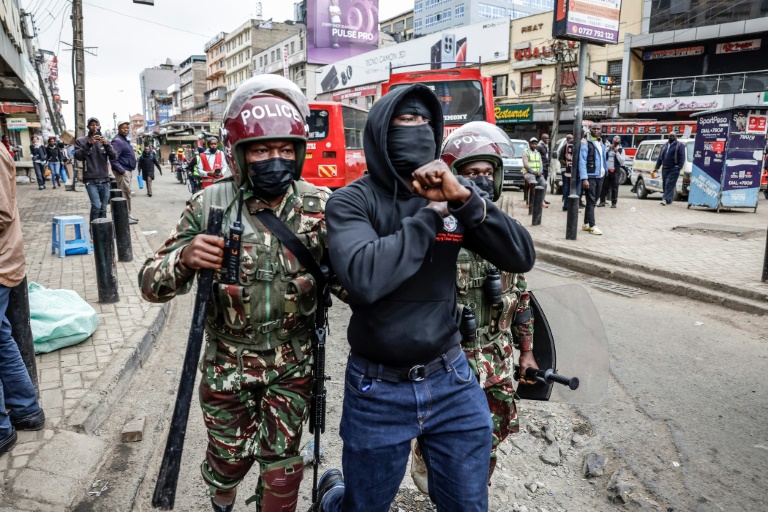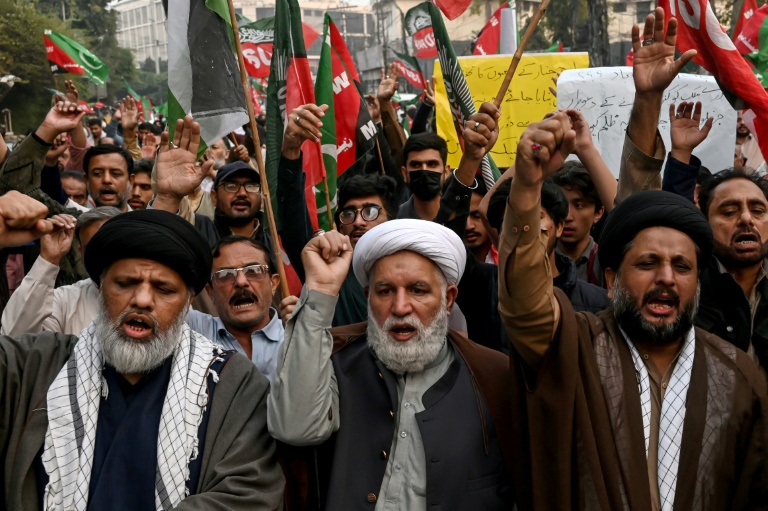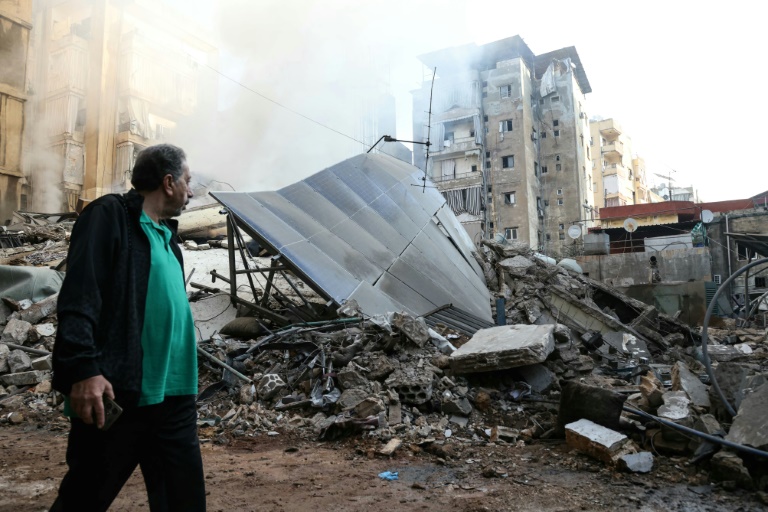Kenyan police fired volleys of tear gas Thursday in the capital Nairobi, injuring several journalists, as small groups of protesters gathered on what was billed as a fresh day of action against embattled President William Ruto.
The East African nation, usually one of the most stable in the region, has been rocked by weeks of sometimes deadly protests against Ruto’s two-year-old administration, mostly led by young Kenyans.
As Ruto was overseeing the swearing-in of a revamped cabinet, riot police were out in force in the central business district where many shops were shut, while roadblocks were set up on major arteries.
Just a few dozen demonstrators turned out in the centre of Nairobi, chanting “we are peaceful”.
But police fired tear gas multiple times, wounding several journalists including two AFP staff members who said officers had fired tear gas canisters directly at them.
The International Press Association of East Africa said at least three journalists had been shot “at close range” with tear gas canisters.
The Nairobi-based group said it “condemns this violent targeting of journalists simply for doing their jobs. It is unacceptable and contrary to fundamental principles of democracy”.
Agence France-Presse’s global news director Phil Chetwynd said: “It is totally unacceptable to target journalists doing their jobs. In the case of the AFP staff members, both were clearly recognisable as journalists.”
Police said they had arrested 174 “suspects” in Nairobi, Kitengela-Rift Valley and Emali-Makueni county on Thursday.
Global media rights watchdog Reporters Without Borders issued a report Thursday saying it had documented police violence and intimidation against journalists covering the seven weeks of protests, using rubber bullets, tear gas and arbitrary arrests.
“The authorities must immediately put an end to these outrageous violent practices and the subsequent impunity,” said the group, known by its French acronym RSF.
At least 60 people have been killed since the demonstrations began in mid-June. Police have been accused of using excessive force, sometimes firing live bullets, while dozens of people have gone missing, say rights groups.
Wanjiku Stephens, a 29-year-old fashion stylist, said she had taken to the streets since the rallies began to demand “good governance and accountability”.
“I have been beaten,” Stephens, sporting a bright blue robe, ski goggles and multiple masks, told AFP in Nairobi. Police brutality should be a “thing of the past, we should not be seeing it in 2024”, she added.
Kenya’s acting police chief Gilbert Masengeli had warned on Wednesday that “criminals” intended to infiltrate the demonstrations, which have descended into violence and chaos a number of times.
What started out as peaceful youth-led rallies against controversial proposed tax hikes have ballooned into wider action against Ruto and what many see as profligate government spending and corruption.
Organisers have in the past accused “goons” of hijacking their plans for peaceful action and of stoking trouble.
In a bid to tackle the worst crisis of his presidency, Ruto has taken a series of measures to address public anger including scrapping the tax hikes, rejigging his cabinet and making deep budget cuts.
He said Thursday’s installation of a new “broad-based” cabinet — which includes four opposition stalwarts but also a number of previously sacked ministers — represented the start of a “new chapter” for Kenya’s governance and development.
Ruto took office in September 2022 after winning a closely fought and divisive election against veteran opposition leader Raila Odinga, pledging to work for Kenya’s poor and downtrodden.
While economic growth has remained relatively strong, estimated by the central bank at 5.4 percent this year, a third of the country’s 52 million people live in poverty.
Edwin Kagia, a 24-year-old man trying to eke out a living selling masks, said Ruto should be given a chance.
“We have to wait. Right now what Kenya needs today is to give our president time,” he told AFP.
AFP







